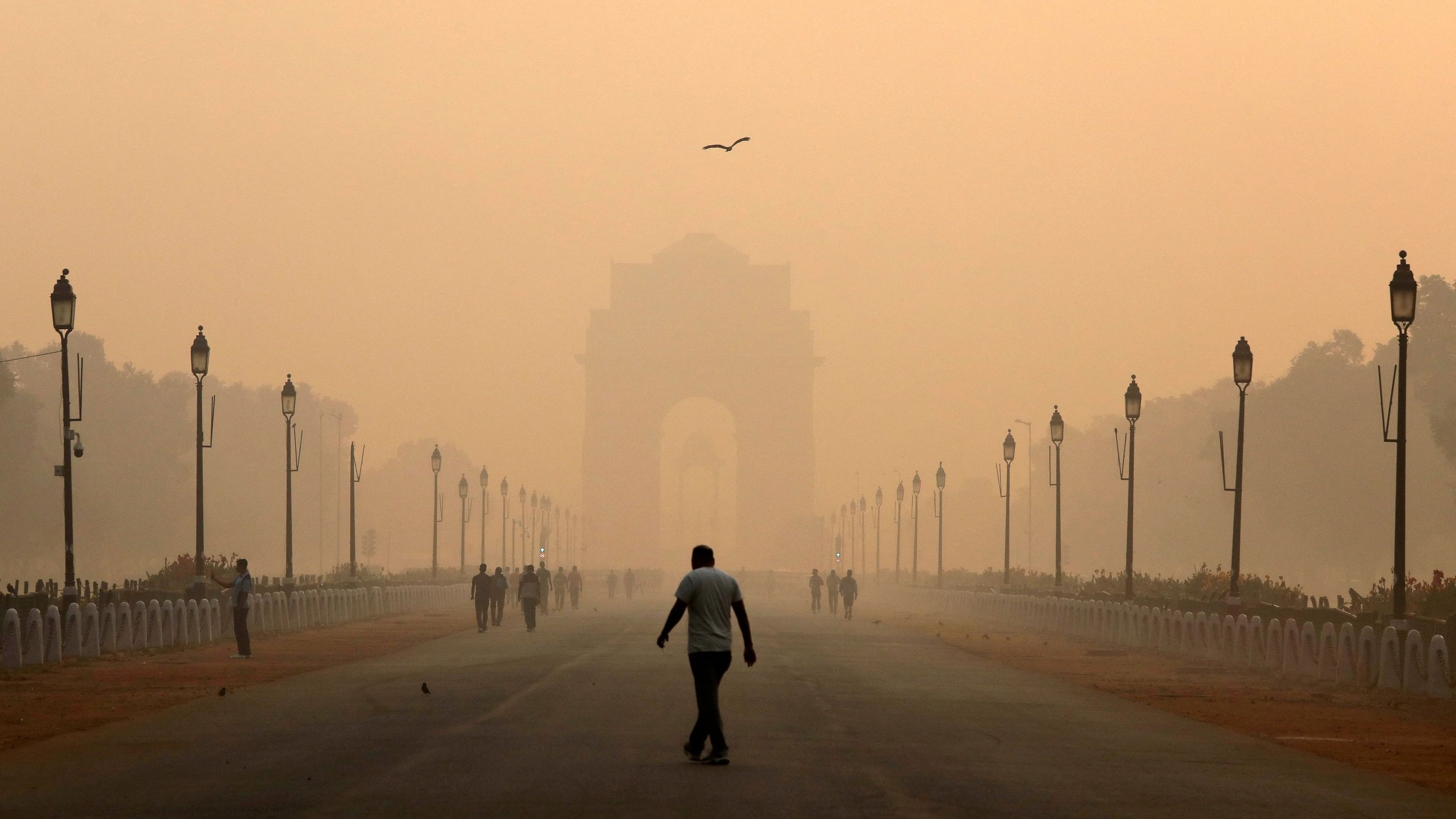
A man walks in front of India Gate shrouded in smog in New Delhi.
Credit: Reuters File Photo
A day after the first visuals of stubble burning in Punjab appeared on social media, on September 29, Delhi Chief Minister Arvind Kejriwal announced his government’s annual winter action plan to combat the dreaded smog that will soon engulf India’s Indian capital city.
The 2023 version of the 15-point air pollution reduction plan combines preventive measures and punitive actions to go after multiple sources of air pollution, from garbage burning and dust from construction sites to checking vehicular emissions and reducing stubble burning. Using real-time data and hundreds of rapid response teams to implement its directions, the plan weaponises anti-smog guns, automatic sweepers, sprinklers, fines, and closures in its war against air pollution.
In November 2016, after Delhi witnessed one of its worst incidents of pollution-induced smog, the Supreme Court directed Delhi and NCR authorities to form a plan to deal with air pollution and subsequently the Ministry of Environment, Forest and Climate Change in 2017 came out with the Graded Response Action Plan (GRAP), which involved co-ordination between multiple agencies in Delhi to activate/reactive pollution control measures corresponding to increasing Air Quality Index (AQI) levels. Since then, these plans have been followed every year.
The government claims that the plans have worked, and PM 2.5 levels have reduced compared to 2014. Delhi residents, on the other hand, recall the filthy air that gathers over the city every year. In 2022, despite its 15-point climate action plan in place, by November 3, the air quality in the city had dipped just a notch short of the ‘severe plus’ category prompting the government to invoke the final stages of GRAP measures.
In November 2021, within a month of the launch of Delhi’s first 10-point winter action plan, the Supreme Court suggested a two-day lockdown to bring down severe air pollution. It was worse in 2020, when the Central Pollution Control Board's air quality index recorded severe levels of pollution between 450 and 499 at monitoring centres in the city, with 500 being the highest pollution level on the scale. That score is more than 20 times the limit deemed safe by the World Health Organization (WHO) — it roughly equals smoking 25 cigarettes a day. In November 2019, a public health emergency had to be declared due to the deteriorating air quality.
From time to time, the blame for severely polluted days shifts from stubble burning and garbage burning to Delhi’s unfortunate geographical location and peculiar meteorological conditions during winter. In October, as temperatures start dropping, the height of the mixing layer (the layer adjacent to the ground over which an emitted particle rests) reduces, trapping the pollutants closer to the ground. Even if emissions remain constant, pollution levels will increase. Others point to the rapid scale of industrialisation in and around Delhi, and the levels of pollution in the entire Indo-Gangetic plains caused by ongoing deforestation in the Himalayas and its foothills.
Which is why it isn't easy to take New Delhi’s winter action plan seriously. How can an otherwise comprehensive plan miss out on including a complete and permanent ban on the cutting of trees? A plan that envisions planting 10 million saplings without a moratorium on tree-cutting and deforestation in and around Delhi makes it even more absurd.
It is well-known that trees are the best weapon against dust and pollutants, several studies have shown that ‘wherever there is a high density of trees, the quantity of pollutants is drastically low. Conversely, the amount of dust trapped by the trees in these areas is very high’.
In 2019, 2020, and 2021, five trees were being cut down every hour in Delhi, a total of 133,117 trees were cut with prior permission from the tree officer, most of them for building housing colonies. The high court bench of Justice Najmi Waziri had observed, “Remedying the harm and loss of tree-cover would possibly take another 20 years.” Besides the central ridge and biodiversity park, Delhi has already lost most of its ‘true forests’ and whatever remains is infested with invasive species.
Many of the trees slated to be cut are mature trees native to India. Old fully grown trees like Banyan Fig, Semal and Siris, and Ashoka which are well-suited for Delhi’s arid climate as well as help maintain urban biodiversity, are its main winter and year-round defence against air pollution.
Kejriwal cannot turn a blind eye to the only known solution to air pollution; he must add two more points to his otherwise exhaustive 15-point programme — a permanent ban on all tree cutting in Delhi, and a negotiated moratorium on deforestation with its neighbouring states.
(Shailendra Yashwant is a senior adviser to Climate Action Network South Asia (CANSA))
Disclaimer: The views expressed above are the author's own. They do not necessarily reflect the views of DH.